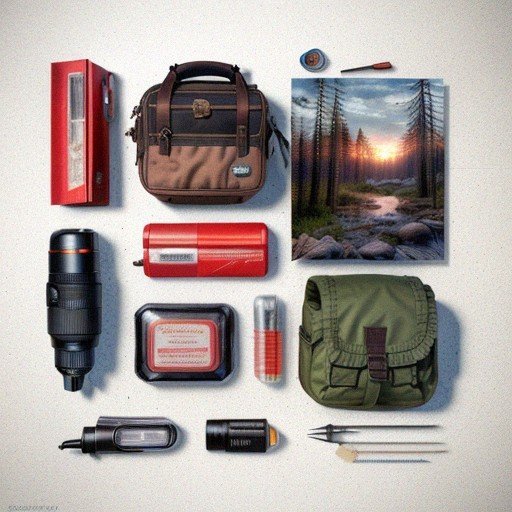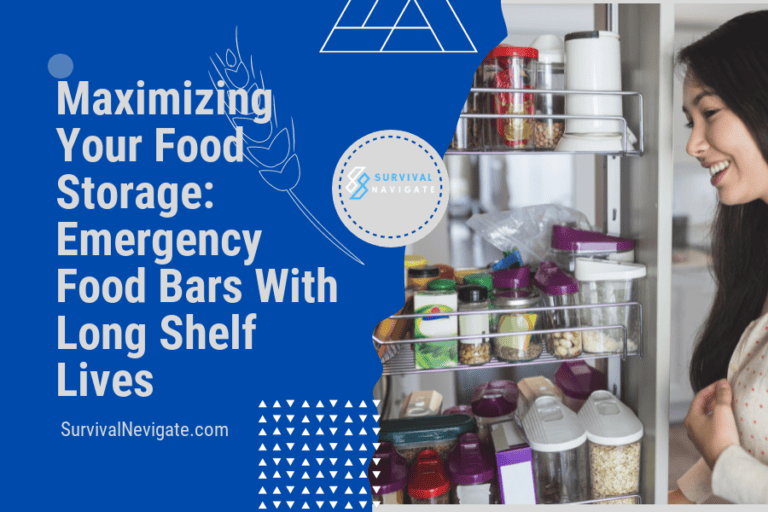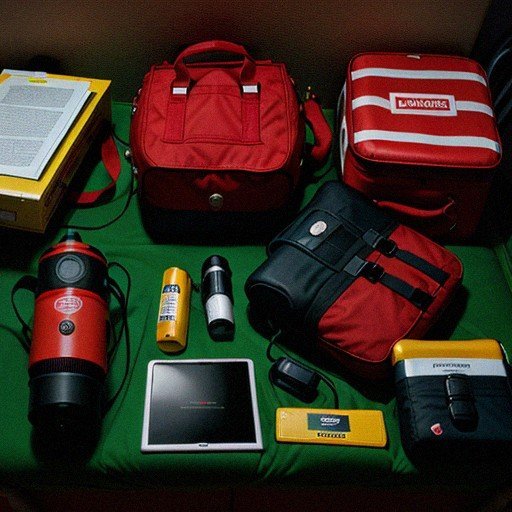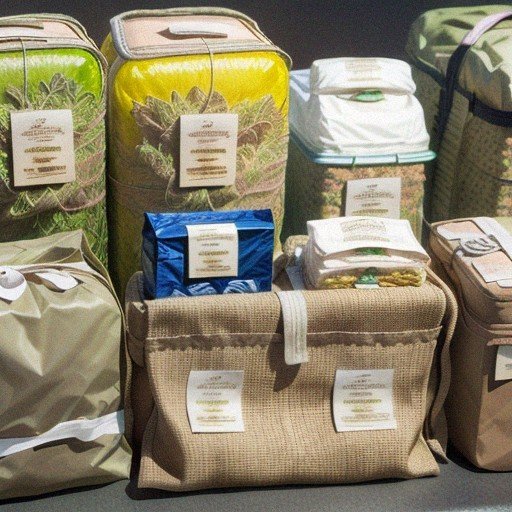Emergency Survival Kit Essentials: Must-Have Items for Your Safety
When it comes to emergency situations, being prepared is crucial. One of the most important things you can do to ensure your safety and survival is to have an emergency survival kit. This kit should contain all the essentials you need to sustain yourself and your family for at least 72 hours in case of an emergency.
While the contents of an emergency survival kit may vary depending on your location and specific needs, there are some basic items that should be included in every kit. These include water, food, shelter, and first aid supplies. It’s important to note that your kit should be tailored to your specific needs, so be sure to consider any special needs or medical requirements when putting together your kit.
Understanding the Basics of Emergency Survival Kits
When it comes to emergency preparedness, having a well-stocked survival kit is essential. In an emergency situation, you may not have access to basic necessities such as food, water, and shelter, so it’s important to have these items on hand. Here are some basics to consider when putting together your own emergency survival kit.
Water
Water is the most important item to have in your survival kit. You should plan to have at least one gallon of water per person per day, with enough water to last for at least three days. It’s important to store your water in a cool, dry place and to replace it every six months.
Food
Non-perishable, easy-to-prepare items are the best choice for an emergency survival kit. Canned goods, protein bars, and dried fruits are all good options. You should have enough food to last for at least three days, and make sure to include a manual can opener in your kit.
Shelter
In an emergency situation, you may need to find shelter quickly. A sturdy tent or tarp, along with blankets and warm clothing, can help protect you from the elements. It’s also a good idea to include a waterproof poncho in your kit.
First Aid
A basic first aid kit is essential in any emergency survival kit. It should include bandages, gauze, antiseptic wipes, and any necessary medications. You should also include a first aid manual in your kit to help you in case of an emergency.
Tools
There are several tools that can be useful in an emergency situation. A multi-purpose knife, a flashlight with extra batteries, and a hand-crank radio can all be helpful. You should also consider including a whistle and a signaling mirror in your kit to help you get attention in case of an emergency.
Personal Items
In addition to the basics, you should also consider including personal items in your emergency survival kit. This might include items such as prescription medications, glasses or contact lenses, and copies of important documents such as passports and insurance policies. It’s also a good idea to include some cash in your kit in case you need to purchase supplies or services during an emergency.
By following these basics, you can ensure that you are well-prepared for any emergency situation. Remember to review and update your kit regularly to make sure that you have everything you need to stay safe in an emergency.
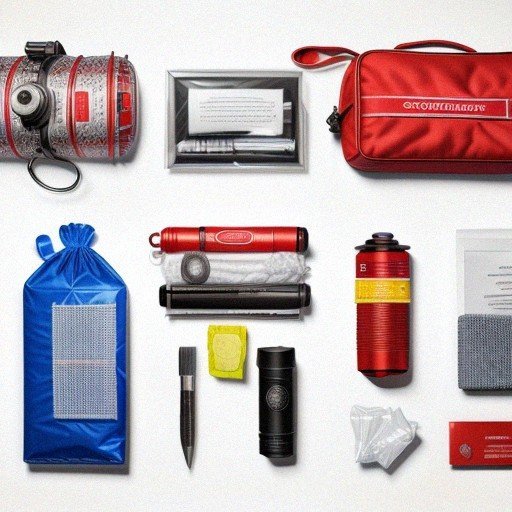
Essential Items in a Survival Kit
When preparing for an emergency, it’s crucial to have a well-stocked survival kit. In this section, we’ll cover the essential items to include in your kit.
Water and Food
Water and food are the most important items to include in your survival kit. It’s recommended to have at least one gallon of water per person per day, and a three-day supply for evacuation or a two-week supply for home use. Non-perishable, easy-to-prepare food items are also essential. Canned foods, energy bars, and dried fruits and nuts are all good options.
| Item | Quantity |
|---|---|
| Water | 1 gallon per person per day |
| Canned foods | At least 3 days’ worth |
| Energy bars | At least 3 days’ worth |
| Dried fruits and nuts | At least 3 days’ worth |
First Aid Supplies
Injuries and illnesses can occur during an emergency, so it’s important to have a well-stocked first aid kit. Include items such as adhesive bandages, gauze pads, antiseptic wipes, and pain relievers. It’s also a good idea to include a first aid manual and any necessary prescription medications.
| Item | Quantity |
|---|---|
| Adhesive bandages | Assorted sizes |
| Gauze pads | Assorted sizes |
| Antiseptic wipes | At least 10 |
| Pain relievers | At least 10 tablets |
| First aid manual | 1 copy |
Shelter and Warmth Supplies
In an emergency situation, it’s important to have shelter and warmth supplies to protect yourself from the elements. Include items such as a tent, sleeping bag, and warm clothing. It’s also important to have a fire starter, such as matches or a lighter, and extra blankets.
| Item | Quantity |
|---|---|
| Tent | 1 |
| Sleeping bag | 1 per person |
| Warm clothing | At least 1 change of clothes per person |
| Fire starter | Matches or lighter |
| Blankets | At least 2 per person |
By including these essential items in your survival kit, you’ll be better prepared for any emergency situation. Remember to regularly check and update your kit to ensure that all items are in good condition and up-to-date.
Additional Important Items
When preparing an emergency survival kit, it’s important to consider additional items beyond the basic supplies of food, water, and shelter. In this section, we will discuss some important items to include in your kit that can help you communicate, navigate, and start a fire.
Communication Devices
During an emergency, communication can be critical. It’s important to have a way to contact emergency services and stay in touch with loved ones. Here are some communication devices to consider:
- Cell phone with a portable charger or extra battery
- Two-way radio
- Whistle
- Flares
- Signal mirror
Navigation Tools
In an emergency situation, navigation can be difficult. Having the right tools can help you find your way to safety. Here are some navigation tools to consider:
- Compass
- Map of the area
- GPS device
- Signal flares
- Whistle
Fire Starters
Starting a fire can be a lifesaving skill in an emergency situation. Not only can it provide warmth and light, but it can also be used to signal for help. Here are some fire starters to consider:
- Waterproof matches
- Lighter
- Firestarter kit
- Magnesium fire starter
- Flint and steel
Remember, these additional items are just some suggestions to consider when building your emergency survival kit. You should tailor your kit to your specific needs and the potential emergencies you may face.
Optional Extras
When it comes to building an emergency survival kit, there are a few optional extras that can be useful to include. These items are not necessarily essential, but they can come in handy in certain situations.
Survival Books
Having a few survival books in your kit can be a great way to prepare yourself for different scenarios. Books can provide valuable information on topics such as wilderness survival, first aid, and emergency preparedness. They can also provide inspiration and motivation during difficult times.
Consider including books such as “The SAS Survival Handbook” by John “Lofty” Wiseman, “Bushcraft 101” by Dave Canterbury, and “The Ultimate Survival Manual” by Rich Johnson. These books provide a wealth of information on various survival topics and can be a great resource to have in your kit.
Multi-Tool
A multi-tool is a versatile tool that can come in handy in a variety of situations. It typically includes pliers, a knife, a saw, a file, and other tools in a compact package. A good multi-tool can be a valuable addition to your emergency survival kit.
Look for a multi-tool that is durable and made from high-quality materials. Some good options include the Leatherman Wave Plus, the Gerber Suspension NXT, and the SOG PowerAssist.

Portable Charger
In today’s world, staying connected is more important than ever. A portable charger can be a great addition to your emergency survival kit, allowing you to keep your phone or other devices charged even if you don’t have access to electricity.
Look for a portable charger with a high capacity and multiple charging ports. Some good options include the Anker PowerCore 10000, the RAVPower 26800mAh, and the Jackery Bolt.
Including these optional extras in your emergency survival kit can help ensure that you are prepared for a variety of situations. While they may not be essential, they can certainly come in handy when you need them most.
How to Pack a Survival Kit
When it comes to packing a survival kit, it’s important to choose the right bag and organize the items properly. Here are some tips on how to pack a survival kit:
Choosing the Right Bag
The first step in packing a survival kit is choosing the right bag. You want a bag that is durable, lightweight, and easy to carry. Here are some options to consider:
- Backpack: A backpack is a great choice for a survival kit because it’s easy to carry and can hold a lot of items. Look for a backpack with multiple compartments to help you stay organized.
- Duffel bag: A duffel bag is another good option for a survival kit. Look for a bag with sturdy handles and a shoulder strap for easy carrying.
- Dry bag: If you’re packing a survival kit for a water-based emergency, a dry bag is a must-have. Look for a bag that is waterproof and can keep your items dry.
Organizing the Items
Once you’ve chosen the right bag, it’s time to start organizing the items in your survival kit. Here are some tips to help you stay organized:
- Categorize your items: Divide your items into categories, such as food, water, shelter, and first aid. This will make it easier to find what you need in an emergency.
- Use containers: Use small containers, such as plastic bags or Tupperware, to keep your items organized. Label the containers so you know what’s inside.
- Pack strategically: Pack the most important items in easy-to-reach places, such as the outside pockets of your bag. This will make it easier to access them in an emergency.
- Don’t forget documentation: In addition to your survival items, make sure you have important documentation, such as copies of your ID, insurance information, and emergency contact numbers.
By following these tips, you can pack a survival kit that is organized, easy to carry, and has everything you need to survive in an emergency.
Maintaining Your Survival Kit
Keeping your survival kit in good condition is crucial to ensuring its effectiveness during an emergency situation. Here are some tips on how to maintain your survival kit.
Regular Checks
It’s important to regularly check your survival kit to ensure that all items are in good condition and have not expired. We recommend doing a check every six months to make sure that everything is still in working order.
During your check, make sure to inspect all food and water supplies for any signs of spoilage or damage. Check the expiration dates on all perishable items and replace them as needed. Don’t forget to also check the batteries in your flashlight and radio and replace them if necessary.
Updating Supplies
As time goes on, your survival kit may need to be updated with new supplies or equipment. It’s important to stay up-to-date on the latest recommendations for emergency preparedness and to make changes to your kit accordingly.
We recommend reviewing your survival kit at least once a year to see if there are any new items that you should add. For example, you may want to consider adding a portable phone charger or a solar-powered radio to your kit.
It’s also important to consider any changes in your personal situation that may require updates to your survival kit. For example, if you have a new pet, you may need to add extra food and supplies for them.
By regularly checking and updating your survival kit, you can ensure that you are prepared for any emergency situation that may arise.
Conclusion
In conclusion, having an emergency survival kit is essential for anyone who wants to be prepared for unexpected situations. We have discussed the necessary items that should be included in a basic survival kit, such as food, water, first-aid kit, and communication devices.
It is important to note that every kit should be customized based on individual needs and the specific situation. For example, if you live in an area prone to hurricanes or floods, you may want to include waterproof items and a means of evacuation.
We also recommend checking your kit regularly to ensure that all items are in working order and not expired. It is also a good idea to have a plan in place for how to use the items in your kit and what steps to take in an emergency situation.
Remember, being prepared can make all the difference in an emergency. By having a well-stocked survival kit, you can increase your chances of survival and reduce stress during difficult times.

